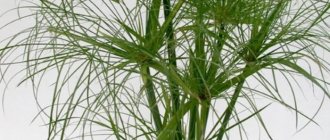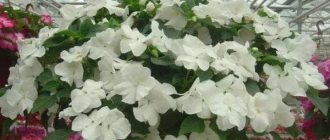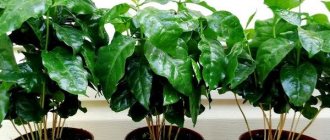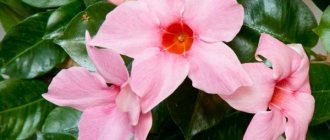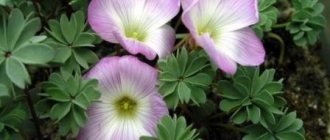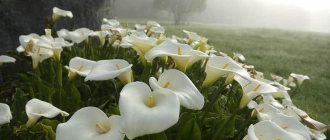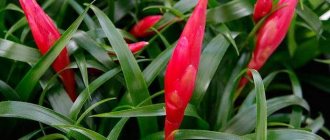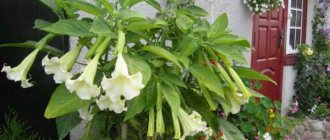Features of Levisia
The low-growing perennial plant Levisia is a succulent, and it belongs to the Montiaceae family. Under natural conditions, this lovely flower, whose height is no more than 0.3 meters, can only be found in North America. Most often, Levisia is found on gravelly soils and rocky slopes at an altitude of more than 800 meters above sea level.
Small nodules form on the powerful root system. The bush clings tightly to the soil with its roots, trying to grow into it as deeply as possible. This evergreen plant is distinguished by its heat-loving nature and demanding growing conditions. Particular attention should be paid to the level of soil moisture. If the soil is excessively dry, this can lead to massive leaf loss. But stagnation of liquid in the ground can cause the death of this succulent.
In autumn and spring, Levisia bushes are decorated with spectacular green leaf plates. In April or May, numerous flowers of rich color appear on them. This perennial blooms in the last days of September.
Levisia has a round leaf rosette, the diameter of which can vary from 0.3 to 0.4 m. The shape of the leaf plates is lanceolate or oval-elongated. They are fleshy, leathery to the touch and elastic. The surface of the leaves is smooth and dark green.
During flowering, an erect peduncle rises above the leaf rosette, the length of which can vary from 15 to 20 centimeters. Several large flowers open at the top of the peduncle. Compared to a bush, Levisia's flowers are incredibly large. Each of them can reach up to 50 mm in diameter. The petals are narrow (up to 0.5 cm wide) with a torn edge and have a point at the top, and they reach a length of about 20 mm. Flowers can be painted in various shades: pink, lilac, red or yellow shades combine effectively with white. The core of the flowers is colored yellow, it has a central pistil and several stamens on long stalks. When the flowers fade, a round fruit is formed, reaching approximately 0.4 cm in diameter.
Recommended species and varieties
L. brachycalyx
Against a background of leaf rosettes, whole bouquets of white or pink flowers appear from early to mid-spring. Each flower reaches 4 cm in diameter. The leaves are narrow, gray-green, pointed, up to 7.5 cm long. In summer, this herbaceous plant almost completely dies off, and only a small crown of leaves remains. The height and diameter of the plant is 7.5x15 cm.
Bouquets of white or pink flowers
L. Columbiana (L. Colombian)
At the end of spring and summer, airy inflorescences of small pink or crimson flowers up to 2 cm in diameter rise above the leaf rosettes. This is an evergreen species with loose leaf rosettes formed by dark green strap-shaped or spoon-shaped leaves up to 10 cm long. The height and diameter of the plant is 25x15 cm .
Airy inflorescences of small pink flowers
Ssp. rupicola
The flowers are somewhat larger and darker shades of crimson or pink. Leaves are up to 3 cm long, in flattened, compact rosettes. Plants reach a height of about 20 cm.
Ssp. rupicola
Ssp. wallowensis
The flowers are white with pink veins, no more than 1.5 cm in diameter. Leaves are up to 4 cm long and form loose rosettes. Plant up to 15 cm tall.
The flowers are white with pink veins
L. cotyledon (L. cotyledon)
Flowers range from pink with dark pink or purple stripes to white or cream with yellow or orange stripes, in compact inflorescences. The inflorescences rise high above the spreading leaf rosettes. Blooms from late spring to late summer. Each flower is up to 4 cm in diameter. The leaves are thick, leathery, dark green, belt-shaped, often with wavy edges, about 6-10 cm in length. The height and diameter of the plant is 30x30 cm.
L. cotyledon
George Henley
From early to mid-summer, many red flowers about 2 cm in diameter appear. The leaves are narrow, belt-shaped, up to 8 cm long, forming compact basal rosettes. The height and diameter of the plant is 15x15cm.
George Henley
I. longipetala
This species has fragrant pink flowers up to 3.5 cm in diameter, collected in small inflorescences. Flowering time is from late spring to early summer. This is a herbaceous plant with bright green rosettes of thickened, belt-shaped leaves up to 5 cm long. The height and diameter of the plant is 5x10 cm.
Fragrant pink flowers
L. nevadensis (L. nevadensis)
White or white with a pink tint, the flowers of this herbaceous plant, about 3 cm in diameter, appear in dense bunches in the center of leaf rosettes from late spring to early summer. Green, belt-shaped or narrowly oblong leaves up to 10 cm long. The height and diameter of the plant is 7.5x10 cm.
herbaceous plant
Lpygmaea (L. dwarf)
Small white or carmine flowers up to 1.5 cm in diameter form spreading, often recumbent inflorescences. Flowering time is late spring - early summer. This herbaceous plant has dark green spreading or vertical, belt-shaped or narrowly oblong leaves up to 9 cm long, forming tufts. The height and diameter of the plant is 7.5x12.5 cm.
Carmine flowers
Rediviva (L. reviving)
Groups of white, pink or sometimes carmine flowers up to 6 cm in diameter appear from late spring to early summer. Belt-shaped dark green leaves up to 5 cm long often form cylindrical bunches. This species grows well in pots in an alpine house. The height and diameter of the plant is 5x7.5 cm.
Groups of white, pink or sometimes carmine flowers
Tweedyi (L. Tweed)
Large, up to 7.5 cm in diameter, silky pink, apricot or pale yellow flowers form dense inflorescences. Blooms from late spring to early summer. Dark green, often with a purple tint, leathery obovate leaves up to 8 cm long form symmetrical rosettes. The species grows well in pots in alpine houses. The height and diameter of the plant is 20x20 cm.
Large, up to 7.5 cm in diameter, silky pink, apricot or pale yellow flowers
Levisia care
Levisia requires special growing conditions and proper care. Only in this case will it actively grow and bloom luxuriantly.
Watering
Watering should be moderate and systematic. This flower can easily tolerate short-term drought, but stagnation of liquid in the roots can destroy it. In nature, Levisia grows very long roots, with which it obtains moisture even during prolonged drought.
Pour water directly under the root, avoiding its contact with flowers and foliage. During prolonged rains, the bushes should be covered with a cap, which should be transparent.
Top dressing
The plant requires no more than two feedings during the season. In this case, organic and mineral fertilizers are used alternately.
Suitable soil
When choosing soil suitable for planting this perennial, you should consider:
- the presence of a drainage layer, the thickness of which should be about half a meter;
- the soil must be acidic;
- The soil composition should include peat, humus, sand, crushed stone and cow manure.
Make sure that moisture does not stagnate in the soil, while keeping in mind that low-lying areas are not suitable for the plant. After planting Levisia in the ground, its root neck is sprinkled with pebbles or gravel around it, which will help protect it from waterlogging.
Trimming
While the bush is blooming, it should never be pruned. At the end of flowering, carefully cut off the flower stalks, but only after they have completely dried. Moreover, they need to be cut off, and not pulled out.
Wintering
Those varieties and types of Levisia that are adapted for growing in the middle zone must be well covered for wintering. To do this, the bushes are covered with a layer of straw or fallen leaves. At the very beginning of spring, to prevent waterlogging, each bush is tightly covered with a glass jar or container.
Levisia in the Garden
